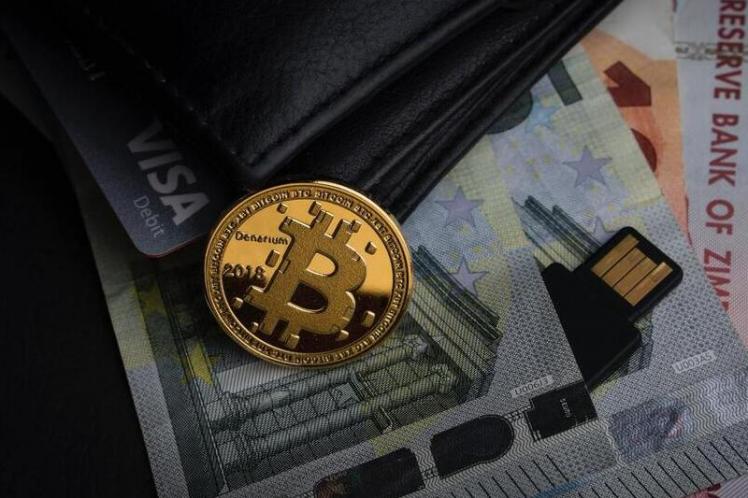Decentralized Finance - A New Investment Landscape

With the price of Bitcoin rising - and that of other cryptocurrencies alongside it - the casual observer might be tempted to think that the current market cycle is simply 2017 repeating itself. This is not the place to discuss what the price of Bitcoin might do next, but it is important to point out some of the differences between where we are now and where we were three years ago.
Market watchers will point to factors such as the fact that large institutions are increasingly turning to Bitcoin as a preservation strategy and a way to balance their portfolios. But almost more interesting is the revolution in blockchain-based financial products that is drawing in retail investors from all around the world.
In 2017, cryptocurrency trading was a very different beast. Not only were crypto exchanges themselves more rudimentary and more likely to be run by fly-by-night companies than the more reputable outfits we see today, but the products on offer were more limited. Essentially, most people who traded cryptocurrencies in 2017 were doing the equivalent of forex trading - switching in and out of Bitcoin and other crypto tokens and taking advantage of arbitrage opportunities as well as wildly gyrating prices.
When compared with traditional financial markets, crypto exchanges were simply unable to offer the wide range of products that were available to sophisticated investors, such as derivatives, synthetic assets, peer-to-peer borrowing and lending, insurance and other contracts.
Decentralized Finance (often referred to as DeFi) and Decentralized Exchanges (DEXs) have transformed the investment landscape and are the logical next step for traders whose first experiences were during the heady days of the 2017 altcoin boom.
Why is DeFi different?
As their name suggests, DeFi products are different from their traditional equivalents in that no centralized institution decides whether an individual can purchase them or acts as a broker or intermediary. Instead, these financial applications are bought and sold in an entirely peer-to-peer market and are issued on top of a public blockchain network - normally Ethereum - which no one single entity controls.
Product issuance and administration is not coordinated, planned or regulated by any ruling body, and once the small pieces of computer code - called smart contracts - have been deployed on the blockchain, they can be leveraged in different combinations, allowing investors to mix and match and create entirely new financial applications. This quality is referred to as ‘composability’ or ‘pluggability’ and has led to the description of these building blocks as ‘money Legos’.
Different protocols offer varying products for whatever purpose you want: MakerDAO for minting stablecoins backed by deposits of Ethereum; Compound for earning interest or borrowing assets against your own collateral; Uniswap for fully decentralized exchange of cryptocurrencies; Synthetic for issuing decentralized synthetic assets; and Nexus for insuring your transactions and deposits.
A common problem with some of the early DEXs - and indeed, many centralized crypto exchanges - had been inaccurate pricing because of very thin volumes. DeFi protocols aim to redress this problem by rewarding with their own tokens cryptocurrency holders who choose to commit their deposits to liquidity pools. This process of receiving rewards in exchange for such deposits is known as ‘yield farming’ - and there are other DeFi protocols that balance your assets for you across the pools that will give you the best reward at any given time.
More than just memes
A fast-moving social media-driven subculture arose around this new breed of token, with catchy names such as YAM, TENDIES and SUSHI. But underlying the memes is a serious message: DeFi is reaching users whom traditional financial markets have traditionally excluded: in other words, it is democratizing access to financial services, incentivising market-makers and innovators based on their contribution, rather than their connections.
Some of the most innovative startups on the market are focusing on giving people tools to build their own financial instruments, rather than simply offering them a way to invest. Vega Protocol, based in London, is one such example. Vega and other platforms like it envisage a world where anyone can have access to a framework that enables them to create any instrument or market they like, wherever they are in the world, providing a level playing field without gatekeeping or interference by the incumbents.
In a cryptocurrency and token ecosystem where sometimes companies and products claim to be more decentralized than they actually are, how, then, may we determine which assets, platforms and instruments genuinely fall under the DeFi category?
Web3 venture fund Outlier Ventures have documented the DeFi phenomenon in detail, defining it as “a peer-to-peer decentralized financial instrument system” (Mapping Decentralized Finance, Outlier Ventures). They helpfully provide a list of five attributes which define whether a product or platform can really be considered as DeFi or not: censorship resistance, having programmable assets, pseudonymous, transparent and trustless and permissionless.
The link to their paper in the paragraph above is well worth reading for anyone who wants to know more about this fast-moving and challenging sector - and you can read more about decentralized financial products, as well as how regulators and governments around the world view such innovation, in my book The Cryptocurrency Revolution.


